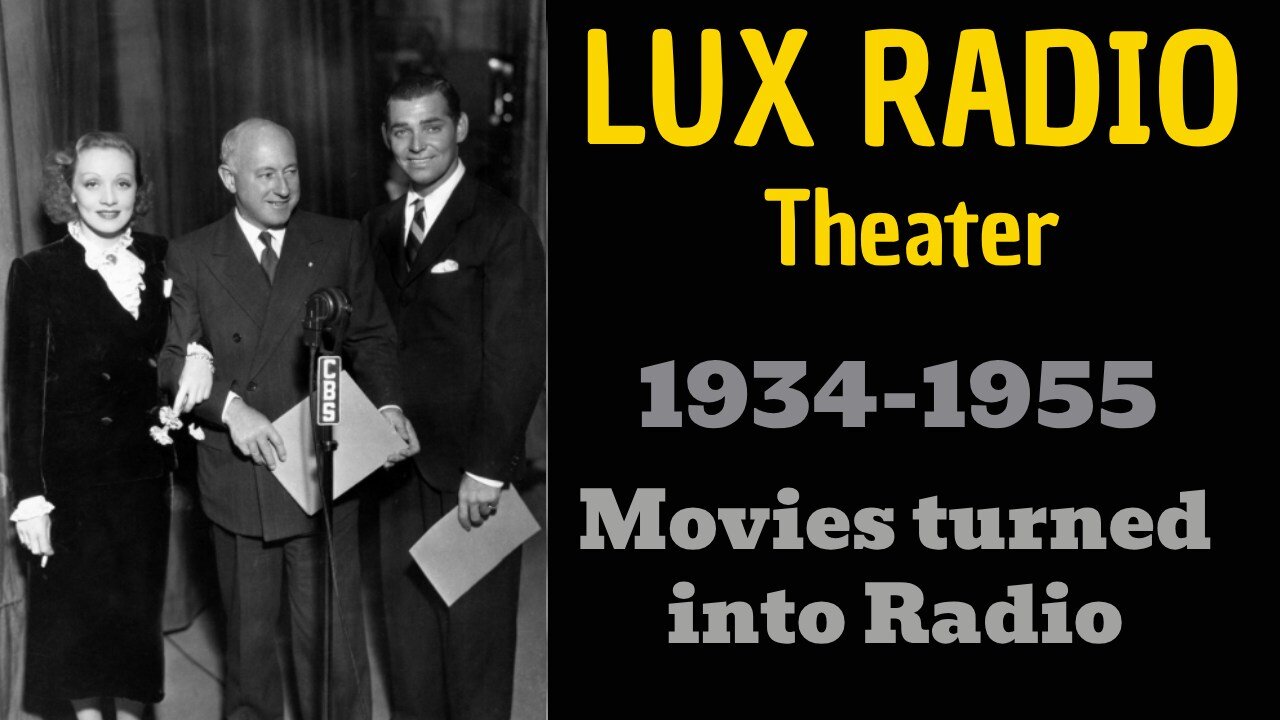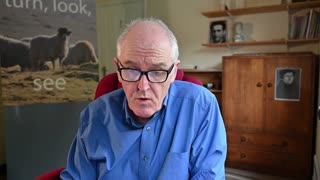Premium Only Content

Lux Radio 39/07/10 (227) Ruggles of Red Gap
Plot
After graduating from Pacific Night Law School in Los Angeles, feisty and ambitious Mexican American Johnny Ramirez loses his first court case because he is ill-prepared. His poor, Hispanic client's truck was destroyed by careless debutante Dale Elwell. Johnny is harassed by the opposing attorney, upper crust Brook Manville, who is defending his lover, Elwell. Johnny reacts, losing his temper and the case.
Lux Radio Theatre was indisputably the biggest, most important, most expensive drama anthology program on radio. It ran from October 14, 1934 until June 7, 1955, then continued on television as Lux Video Theatre until 1957. In all, some 926 episodes were broadcast, providing a record of the most important entertainment events in American theatre and, later, film.
The show was first broadcast on the NBC Blue Network on Sundays at 2:30 PM. The show featured adaptations of successful Broadway plays when it was produced out of New York, such as Seventh Heaven, the first production starring Miriam Hopkins, Smilin' Through, Berkeley Square, Daddy Long Legs, Peg O' My Heart and Way Down East. On July 29, 1935, the show moved to Monday night at 9:00 PM on CBS, where it would stay until June 29, 1954. The show moved to Hollywood on May 25, 1936 with the production of The Legionnaire and the Lady, based on the film Morocco, starring Marlene Dietrich and Clark Gable. The audience for this production was estimated as high as 40 million. The show featured many of the most important films of the period, adapted to fit the 60 minute time slot. Some of the titles for 1939 should indicate the caliber and range of shows: Stage Door, Ceiling Zero, So Big, It Happened One Night, The Lives of a Bengal Lancer, Lady for a Day, The Life of Emile Zola, Tovarich, Only Angels Have Wings, The Prisoner of Zenda, The Awful Truth, Wuthering Heights, You Can't Take It With You, The Old Maid and Goodbye, Mr Chips. For its last season, (1954-1955), the show moved to Tuesday nights at 9 on NBC.
Lux Radio Theatre was always broadcast live, with a studio audience and a full orchestra accompanying the performance and providing musical transitions between scenes. As many film actors were used to numerous takes and not live performance, they sometimes suffered acute stage fright before the show. However, since most received $5,000 for their performance -- in addition to free publicity for upcoming pictures -- actors appeared in their original screen roles if they were available. Indeed, production would halt if necessary, on a film if performers were called to appear on Lux. When the actors were not available, others stepped in. The plays were assembled and rehearsed for a week, in sharp contrast to many other shows, which required a minimal of an actor's time. Regular players for the series included Jim and Marian Jordan, otherwise known as Fibber McGee and Molly. Hosts included Cecil B. DeMille (1936-1945), William Keighley (1945-1952) and Irving Cummings (1952-1955). Directors included Tony Stanford, Frank Woodruff, Fred MacKaye and Earl Ebi.
-
 3:57
3:57
Michael Knowles
13 hours agoIs President Trump SERIOUSLY Sick?!
7.92K6 -
 1:58:30
1:58:30
MG Show
18 hours agoThe Creation of the Russia Hoax; Anon’s Have Had it All
27.8K12 -
 40:31
40:31
Homesteading Family
2 days agoReducing Summer Pest Pressure in the Garden (The Easy Way)
8.78K3 -
 34:27
34:27
SLS - Street League Skateboarding
4 days agoRayssa Leal SHOWED OUT for the Brasilia Fans 👏 | SLS Brasilia Women's Final Highlights
12.9K -
 7:16
7:16
Blackstone Griddles
11 hours agoLeftover Steak Roll-ups on a Blackstone Griddle
3.39K1 -
 14:32
14:32
Dr. John Campbell
2 days agoWHO Trojan Horse
19.9K58 -
 36:54
36:54
SB Mowing
3 days ago5 Families in 3 YEARS… What’s GOING ON at This House?
10.2K14 -
 33:21
33:21
David Diga Hernandez
1 day ago $0.89 earnedWhat No One Is Telling You About the End Times
22.6K4 -
 49:26
49:26
The Official Corbett Report Rumble Channel
10 hours agoStablecoins Are WORSE Than CBDCs! with Mark Goodwin
3.97K6 -
 58:05
58:05
MudandMunitions
9 hours agoFrom Galil to M4: The Rifles That Armed the Israeli Military
2.66K